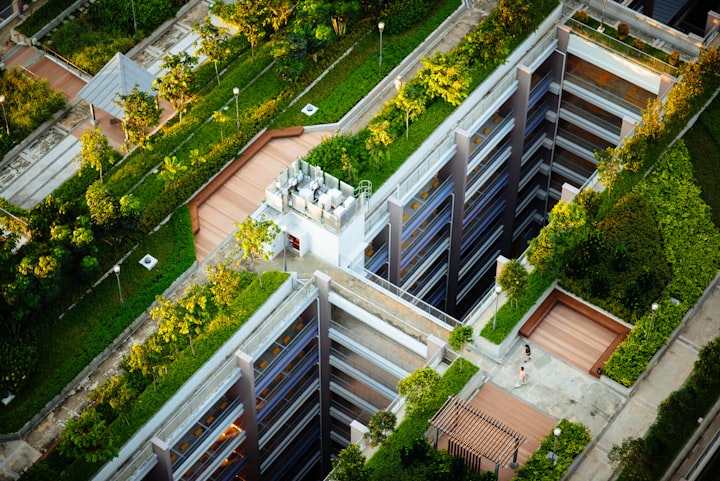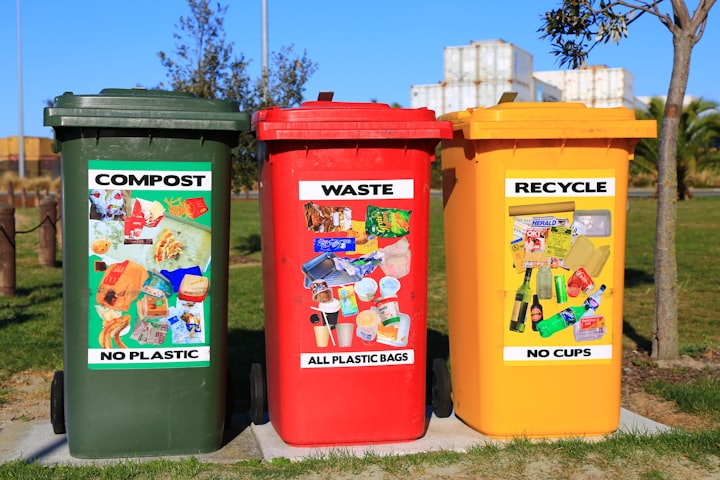Green Buildings: Promoting Environmental Sustainability
In the Construction Industry

Green Buildings: Promoting Environmental Sustainability in the Construction Industry
As the world becomes more aware of the negative impact of human activities on the environment, more and more industries are taking steps to promote sustainability. One such industry is the construction industry, which is responsible for a significant amount of carbon emissions and resource depletion. To address this issue, the concept of green buildings has emerged, which aims to reduce the environmental impact of buildings through various design and construction techniques. In this article, we will discuss the importance of green buildings in promoting environmental sustainability in the construction industry.
What are Green Buildings?
Importance of Green Buildings in Promoting Environmental Sustainability
The construction industry is one of the largest consumers of natural resources and energy, and it is responsible for a significant amount of carbon emissions. Green buildings can help reduce the environmental impact of the construction industry by promoting sustainability in various ways.
Energy Efficiency
Green buildings are designed to be energy-efficient, which means they consume less energy than traditional buildings. They use energy-efficient systems such as LED lighting, HVAC systems, and insulation to reduce energy consumption. This reduces the demand for fossil fuels and helps reduce carbon emissions.
Water Efficiency
Sustainable Materials
Green buildings use sustainable materials such as recycled steel, bamboo, and reclaimed wood to reduce the demand for new resources. This reduces the environmental impact of resource extraction and promotes sustainable resource use.
Waste Reduction
Green buildings also aim to reduce waste by promoting recycling and reducing construction waste. Construction waste is a significant contributor to landfills, and reducing it can help reduce the environmental impact of the construction industry.
Indoor Air Quality
Green buildings also promote indoor air quality by using materials and technologies that minimize the release of harmful chemicals and pollutants. This creates a healthier living and working environment for occupants.
Benefits of Green Buildings
Green buildings offer numerous benefits, including:
Reduced energy and water consumption
Lower operating costs
Improved indoor air quality and occupant health
Increased property values and rental rates
Reduced carbon emissions and environmental impact
Enhanced brand reputation and marketability
Green Building Certification
Trends in Green Building Design
Green building design is constantly evolving, with new technologies and practices emerging all the time. Some current trends in green building design include:
Net-zero energy buildings, which produce as much energy as they consume
Biophilic design, which incorporates natural elements into building design to improve occupant well-being
Green roofs and walls, which provide insulation, reduce stormwater runoff, and improve air quality
Passive design, which uses natural ventilation and daylighting to reduce energy consumption
Circular building design, which aims to minimize waste and promote circular resource use
Government Policies and Incentives
Challenges and Barriers
Despite the benefits of green buildings, there are still some challenges and barriers to their widespread adoption. These include:
Higher upfront costs compared to traditional buildings
Lack of awareness or understanding of green building practices
Limited availability of sustainable materials and technologies
Resistance to change from traditional building practices
Lack of standardized metrics for measuring and comparing sustainability performance
Conclusion
Green buildings are an essential part of promoting environmental sustainability in the construction industry. They offer numerous benefits, including reduced energy and water consumption, improved indoor air quality, and lower operating costs. However, there are still some challenges and barriers to their widespread adoption. To overcome these challenges, it is important to continue to promote awareness and understanding of green building practices and to invest in sustainable materials and technologies. With continued efforts and innovation, green buildings can help promote a more sustainable future for the construction industry and the planet.
Conclusion
Green buildings are an essential part of promoting environmental sustainability in the construction industry. They reduce the environmental impact of buildings by promoting energy and water efficiency, sustainable materials, waste reduction, and indoor air quality. By incorporating green building practices into their operations, the construction industry can play a vital role in promoting sustainability and reducing the negative impact of human activities on the environment.
“Disclosure: Some of the links in this article may contain affiliate links, which means that if you click on one of the links, we may receive a small commission. This is at no extra cost to you and helps to support us”
About the Creator
HSE Insider
Join the HSE community and take your safety knowledge to the next level with “HSE Insider”
Follow us on social media and be sure to share with your network. Together, we can make the world a safer place.
Support HSE Insider today!






Comments
There are no comments for this story
Be the first to respond and start the conversation.